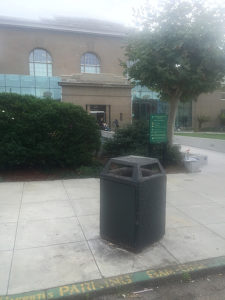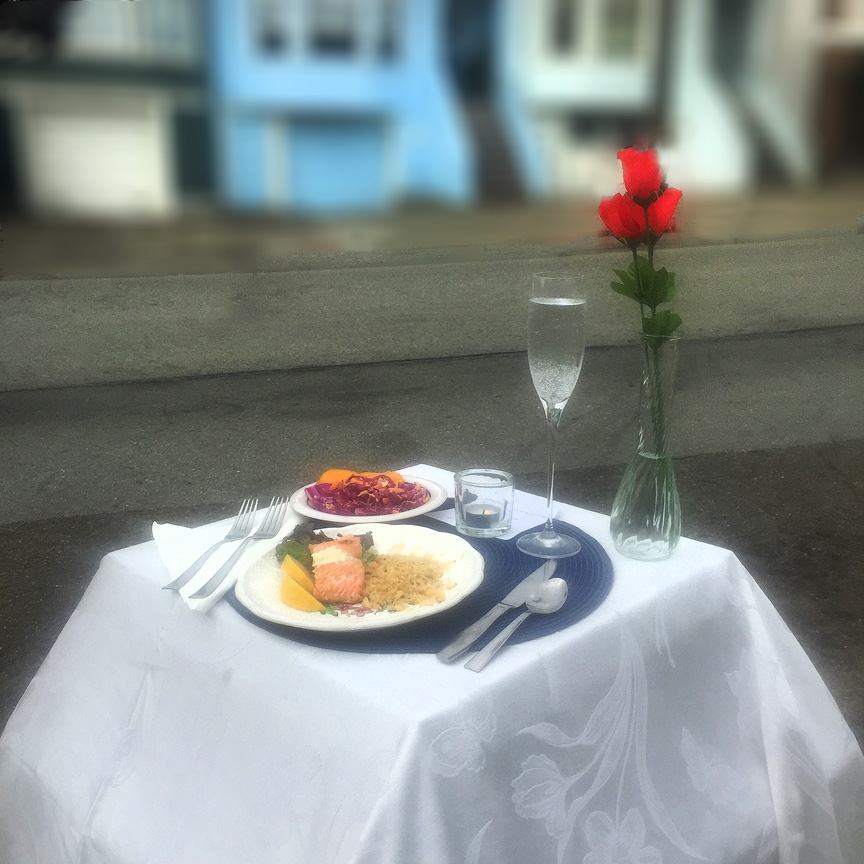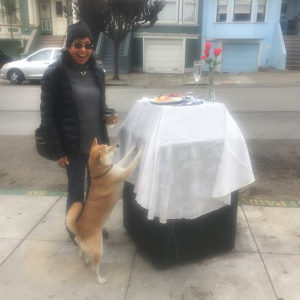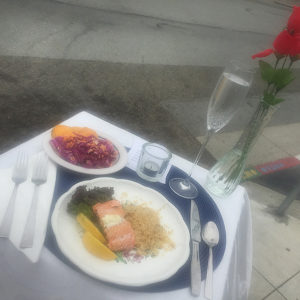I have been observing the homeless men and women that occupy the block around a public library in SF. Mostly these citizens are integrated into the community. People say hello and talk with each other. When available, left-over food from restaurants is left on top of trashcans for them to eat. At other times I see hungry people scavenging through the cans in search of food. I saw a man eating a pizza he’d found using the top of the trashcan as a table. Less than 10 steps away another man was talking on his cell phone saying, “what difference does it make. It’s only 3,000 dollars a month.” Due in part to the density in population and tolerance in SF the gap in social and economic equity has merged quite obviously in public space. Also, the inequality in the extremes of social class, “the have every things vs. the have nothings”, is wider than anywhere in the US. The point of tension is visual. I drew attention to this in a small way through the intervention, “Salmon Lunch”.
For this intervention, I wanted to provide a bit of luxury (have) and make lunch a nice experience for one of the citizens in the streets. I prepared a lunch of grilled salmon with lemon on a bed of lettuce, brown rice, red cabbage, carrot and celery slaw with persimmons on the side. Sparking water was served in a champagne glass. There was a white table cloth, roses and a candle set on top of the trashcan where, normally, leftover take-out is placed. Today there were none of the homeless people on the street. Not even the regulars. I did speak with several people who stopped to look at the installation. They all thought making a nice lunch for the hungry citizens was sweet, a nice gesture. It made a few laugh. One asked if she could use the trash can to throw something away. A dog was interested in the food as were about 10 big black crows. I will try again at a different hour of the day and continue to engage with the public in the space around the public library to draw attention to the extreme inequality of income in SF where displacement is getting worse and the gap wider on a regular basis.
The artist in the lecture I identified most was Sophie Calle, and the phone booth installation she did in collaboration with Paul Auster. I like the idea of leaving the installation outside for people to interact with, and checking back to replenish it. However, since I was intervening in a public space using food, leaving it there didn’t seem like the best idea. I will think of another way. Perhaps a large, decorative and closed container with wrapped, healthy and filling food that won’t attract rats, bugs or black crows or a beautiful and elegant structure on top of the can where the leftovers can be left.






